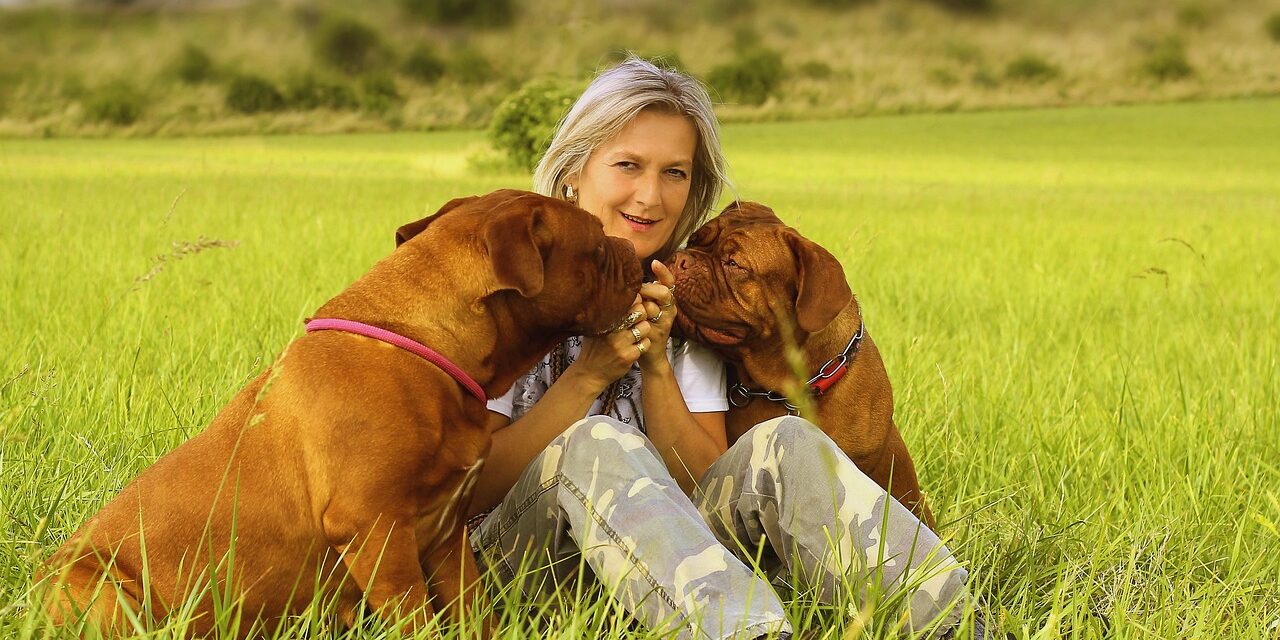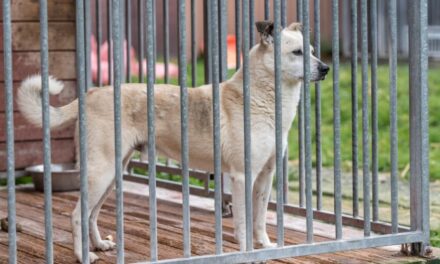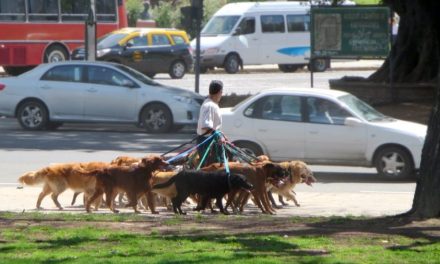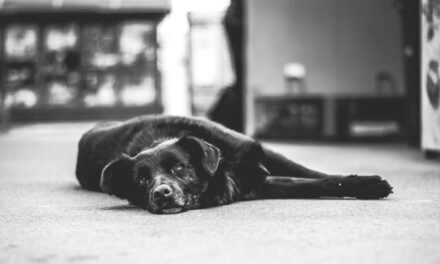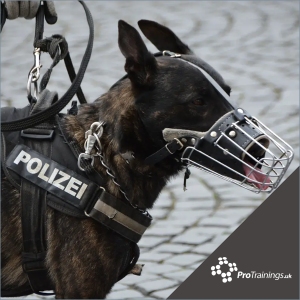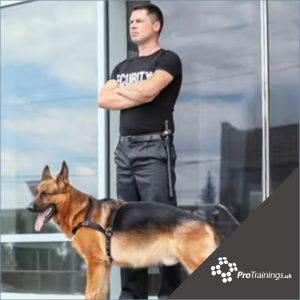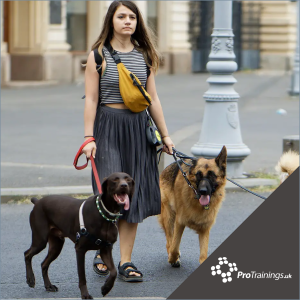In the world of canine companions, few inspire confidence quite like a guard dog. For clients seeking ultimate protection, these powerful breeds seem like the answer. After all, who wouldn’t want a loyal defender by their side?
But as dog professionals, we know there’s more to the story than a fierce bark and a watchful gaze.
Owning a guard dog isn’t just about having a furry bodyguard. It’s a significant commitment that goes far beyond the average pet. Guard dogs require specialised training, unwavering dedication, and a deep understanding of canine behaviour.
Before recommending a guard dog to any client, it’s crucial to have an honest conversation about the realities of responsible ownership.
What is a dog for personal protection?
A dog for personal protection, is a canine bred or kept by its owner to protect them, others around them, or their property.
These dogs can also double up as companion animals and working dogs, such as guide dogs and farm dogs.
Why does your client need a protection dog?
Understanding your client’s needs
- Assess the situation: Before diving into guard dogs, have a thorough conversation about the client’s security needs. Are they concerned about break-ins, nighttime security for a business, or personal protection while walking alone?
- Evaluate their lifestyle: Guard dogs require extensive training and a dedicated owner. Does your client have the time and resources to invest in proper handling and socialisation? Living situations also matter – is their space suitable for a large, active dog?
What alternatives can you recommend to your clients?
- Security systems and home automation: Highlight the advancements in technology as a potential solution. Smart locks, cameras, and alarms can be highly effective deterrents.
- Deterrence training for existing dogs: Many dogs can be trained to bark and alert their owners to unfamiliar sounds or people. This can be a good option for clients with existing pets.
- Professional security services: For high-risk situations, advise clients to consider professional security companies.
What are the challenges of guard dog ownership in the UK?
While guard dogs can inspire a sense of security, their ownership comes with a unique set of challenges that shouldn’t be underestimated.
Here are some key considerations to discuss with your clients.
1. Legal responsibility
Owning a guard dog carries significant legal weight. Clients need to understand their potential liability if their dog injures someone or damages property.
This could involve hefty fines, lawsuits, or even the confiscation of the animal. It’s crucial to seek legal advice to understand local regulations.
- Minimum age: Only those 16 years and older can purchase or keep a guard dog, even in places like kennels or animal sanctuaries.
- Liability: As the owner or handler, you’re legally liable for your guard dog’s actions. This means preventing any unnecessary suffering the dog might inflict or endure.
- Public places: Out in public, guard dogs must be kept on a leash to ensure safety. The Animal Welfare Act 2006 strictly prohibits aggressive behaviour towards people and pets.
- Care requirements: Just like any dog, a guard dog requires proper housing, shelter, vaccinations, and veterinary care to maintain good health and well-being.
- Regulations: UK regulations delve deeper into guard dog ownership. Be sure to familiarise yourself with guard dog registration procedures, authorised dog breeds for protection work, secure kennel requirements, and qualifications for dog handlers and trainers.
2. Training
Guard dogs aren’t “plug-and-play” security systems. They require specialised training that goes beyond basic obedience.
Discuss the importance of finding a reputable trainer with experience in personal protection dogs. This training can be expensive and time-consuming, and there’s no guarantee that every dog will excel in this role.
3. Maintaining balance and control
Even the most well-trained guard dog can pose a risk if its temperament isn’t carefully managed. Genetics and socialisation play a crucial role.
Discuss the potential challenges of maintaining a stable and controlled temperament in a dog bred for protection. Clients need to be prepared for ongoing socialisation efforts and vigilant monitoring to avoid unwanted aggression.
4. Public spaces
Taking a guard dog for walks or to public places can be a complex endeavour.
These dogs often require muzzles, leashes, and a handler who can confidently control them. Discuss the limitations this might place on the client’s lifestyle. Spontaneous outings or visits to dog parks might not be feasible with a guard dog.
Dangerous Dogs Act 1991 (Amended 1997) Section 3 (1) states that owners of a dog at the time it commits an offence that’s classified as being dangerously out of control in public, especially if it involves injuring another animal or person, will be guilty of the offence.
A dog doesn’t have to bite people to be deemed dangerously out of control. Lunging at people, chasing other pets, or aggressively barking in public can be classified as dangerous.
5. Private spaces
An amendment was made to the Dangerous Dogs Act to include dangerously out of control dogs in private spaces. This was in response to fatal dog attacks, including the tragic case of Jade Lomas-Anderson, who was attacked at a neighbour’s home in 2013.
However, this amendment raises some concerns.
- Unequal protection: The law protects those who are “lawfully on the property,” leaving trespassers potentially vulnerable to dog attacks, even if the dog exhibits no prior history of aggression. This can raise ethical concerns, especially for unintentional trespassers like lost children or people seeking help in an emergency.
- Unforeseen encounters: It’s difficult to predict every situation. For example, a dog might perceive someone entering the property through an unlocked gate as a trespasser and attack, even if the person wasn’t aware they were trespassing.
Some argue that homeowners shouldn’t be burdened with the responsibility of protecting trespassers, especially those with malicious intent. Ongoing discussions and potential future amendments may address some of these concerns.
6. Cost
It is essential to ask your clients to consider the cost of keeping a guard dog. Here’s what to consider.
- Ongoing care: Guard dogs require regular vaccinations, microchipping, training, and veterinary checkups. These costs add up over time.
- Specialised training: Guard dogs need specialised training that goes beyond basic obedience. Be prepared to invest in a reputable trainer.
- Legal compliance: Fines can be hefty for not adhering to guard dog ownership laws. Understanding the regulations can save you money in the long run.
7. Further legal considerations
The Guard Dogs Act 1975 governs the ownership of guard dogs in the UK and focuses on two main aspects.
Control and supervision
- Requires a capable handler to be present whenever a guard dog is being used for protection.
- The dog must be under the handler’s control at all times, except when secured.
- Warns that clear signage indicating a guard dog is present must be displayed at every entrance to the premises.
Licensing and responsible ownership
- Restricts keeping guard dogs at kennels without a licence.
- Prohibits using a guard dog if you know it’s normally kept at an unlicensed kennel.
The Act also includes additional details on record keeping, handler qualifications, and preventing cruelty to guard dogs.
Other UK laws pertaining to dogs, apply to guard dog as well, including:
- According to the Road Traffic Act, dog owners are prohibited from allowing their dogs to walk on a designated road unrestrained or to be unconstrained in a car.
- The Public Spaces Protection Order states that it’s an offence to not keep your dog on a lead in public or allow it to foul public areas.
- The Protection of Livestock Act of 1953 states dog owners can be prosecuted if their dogs attack livestock on agricultural land or are left to wander without a lead in places with livestock.
Conclusion
Getting a dog for personal protection can bring you great peace of mind. However, owning a guard dog in the UK requires more than feeding, tagging, or microchipping, and regular vet checkups.
By openly discussing these requirements with potential guard dog owners, you empower your clients to make informed decisions. Guard dogs can be valuable assets, but they require a deep commitment and a willingness to navigate these complexities.
Mr. Aiello, a seasoned legal professional with over three decades of experience, boasts a strong track record in both prosecution and defense across various court levels. From Municipal to Superior Courts, he has adeptly handled a myriad of cases ranging from driving while intoxicated to homicide and sexual assault. Noteworthy victories include the State vs. Ansari case, where his triumph at trial level stood affirmed at the Appellate Division, even surviving a Supreme Court appeal.
Mr. Aiello's strategic prowess extends beyond the courtroom, as evidenced by his success in securing alternative sentencing options like Pre-Trial Intervention and advocating for clients' inclusion in drug court programs. His adeptness in utilising legal tactics to protect clients' rights, coupled with his knack for securing substantial settlements, has earned him widespread recognition in various media outlets.

